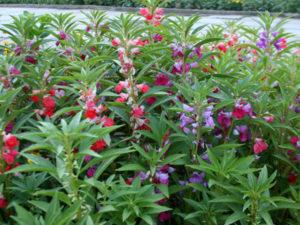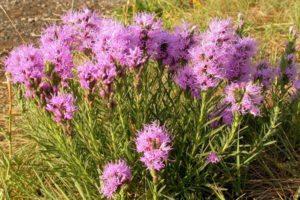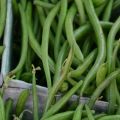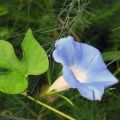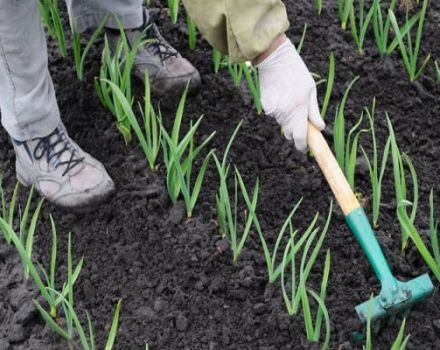Rules for planting and caring for perennial echinacea, 10 best varieties for open ground
Perennial echinacea is loved by flower growers because it has a lot of useful properties. For a long time, decoctions and herbal tinctures have been used in folk medicine to protect against infections and strengthen immunity. At the same time, echinacea is a good honey plant. Its flowers are varied in shape, shade, stem height. A flowering plant will brighten any flower bed or garden plot. A flowering plant will brighten any flower bed or garden plot. Planting and caring for perennial echinacea is simple and requires little experience. It is unpretentious, and even a novice gardener can breed it on the site.
Popular types and varieties of echinacea
The genus Echinacea includes 9 species, each of which is distinguished by a variety of varieties. All of them have excellent decorative qualities, bloom in large, bright inflorescences that compete with each other in beauty. Echinacea is actively used in the preparation of garden compositions, as it gets along well with any flowering plants.
The most common are 2 types of plants - Echinacea purpurea (the ancestor of the mass of modern varieties) and Echinacea strange (a species that does not have varieties).
Strange (Echinacea Britton paradoxa)
Echinacea weird is a plant with rich decorative properties. Only this species has flowers with sun-colored petals.
Purple (Echinacea purpurea)
It has large inflorescences, with an average diameter of up to 15 centimeters, elongated graceful petals. The core rises above the petals and is cone-shaped. Often it creates a contrast to the petals, and then the flower looks even more impressive. The stem is rough, it can reach one meter in length.
Numerous varieties of Echinacea purpurea are expressive, have a variety of shapes and colors.
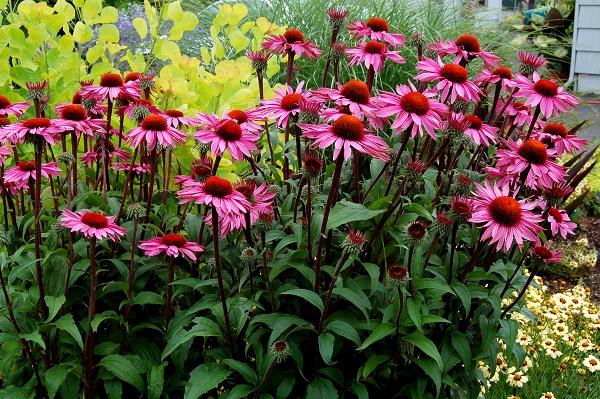
Cranberry Cupcake
Echinacea flowers Cranberry Cupcake have a double core and rich pink petals. This variety is very much appreciated by specialists in the creation of garden compositions and is often used by them.
The king
The King flower has a tall stem. It resembles a large chamomile with red-pink petals. In diameter, flowers can reach 15-16 centimeters.
White swan
Echinacea White Swan (translated as White Swan) blooms with beautiful snow-white flowers, similar to huge daisies.
Indiaca
Tall plant (the stem can be up to 75 centimeters). The flowers have long petals of pink and orange shades, the core is double, fluffy. The flowering period is very long and lasts all summer.
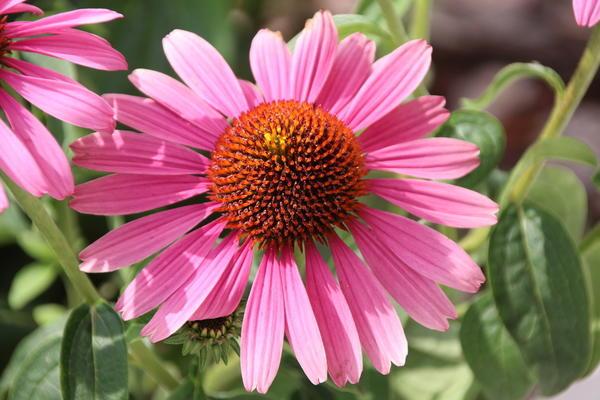
Magnus
The plant has a hard, long stem. The flowers are large, the core and petals can be colored in different ways: the petals are dark red interspersed with purple, and the middle is light brown. The plant is distinguished by late flowering (ends in October, with the onset of cold weather).
Sunset (Echinacea x sunset)
This variety includes several varieties obtained by crossing Echinacea purpurea and paradoxical. In hybrids, breeders have tried to combine the best qualities of these plants. Their flowers have large baskets on branching shoots, gracefully curved petals, and smell nice.
Eccentric
Representatives of this variety are distinguished by a low stem (no more than 60 centimeters). The plant has very impressive large flowers. Its petals are modestly lowered, and the fluffy center is shaped like a ball. It has one interesting property: in the buds the inflorescences are orange, and after flowering they become scarlet.
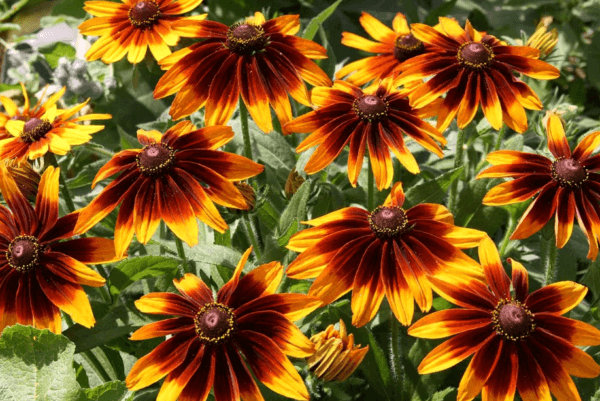
Terry
Echinacea terry is a species that includes several varieties with double flowers. All of them have a fluffy center, framed by delicate petals. There are white, purple, crimson, orange, green shades.
Rudbeckia purpurea
Rudbeckia and Echinacea are two plants belonging to different genera, although very similar in appearance. Their flowers are the same in shape, although they differ in color (they are yellow in rudbeckia, and red in echinacea). Due to this similarity, Echinacea purpurea was described by the naturalist Carl Linnaeus. He gave her the name "purple rudbeckia".
Later, German botanists concluded that the difference between the two plants is more significant. This is not only the shades of the petals, but also the structure of the bracts.
Thus, rudbeckia purpurea is the erroneous name for Echinacea purpurea. For rudbeckia, there is a name given to the plant in its homeland, in North America - Black Eyed Susan (black-eyed Susan) because of the dark inflorescences.
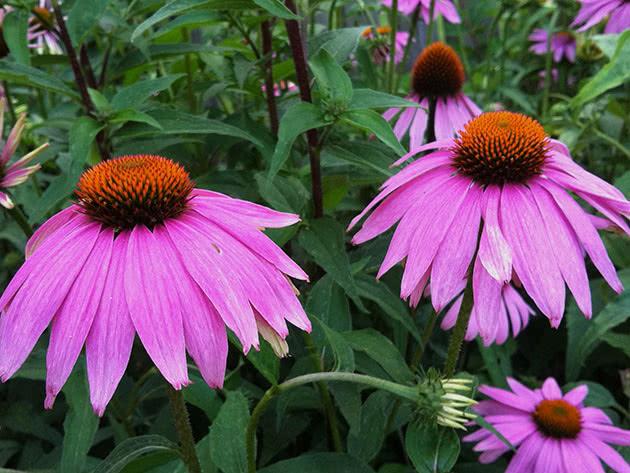
How to plant a perennial plant
Echinacea has a lifespan of about 5 years. For cultivation, you must choose open sunny areas. A slightly alkaline fertile soil is suitable. You can breed a plant with seeds or seedlings.
Planting is done in autumn or early spring. In nature, Echinacea multiplies by self-sowing, dropping seeds in the fall into the ground so that sprouts appear in the spring.
Having chosen a seed planting path for a plant, you should do the same. This method is not reliable as some seeds may be of poor quality. Therefore, it is much more reliable to plant with seedlings previously grown in containers with a nutrient mixture.
Flowers appear in the second year after planting and bloom for about 60 days. It is important to strive to keep the plant strong and healthy. Then it can serve as a good honey plant for bees, and its medicinal properties will be most pronounced.
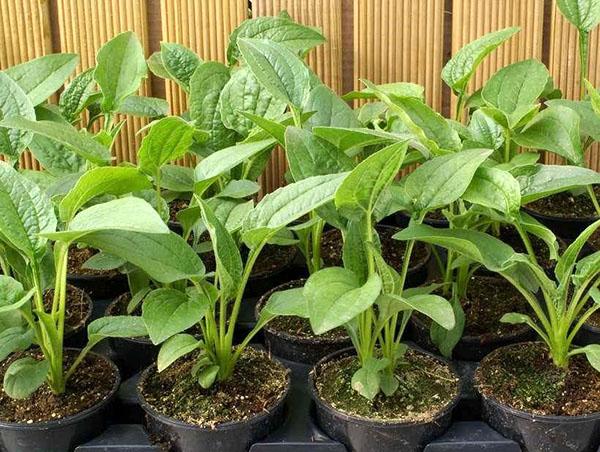
Seed preparation
In order to get strong seedlings, the seeds must first be prepared. The grains are placed in cotton wool or a thin cloth and filled with water so that it completely covers the cloth. After a while, the seeds will germinate, after which they can be planted.
Sowing terms and technology
Before growing in the open field, the hatched seeds must be planted in individual containers with a nutrient medium. Fill the cups with earth, make depressions in them and place the germinated seeds there. Immediately after planting, future seedlings should be watered abundantly. The process of seed germination can last for a long time - up to 1.5 months.
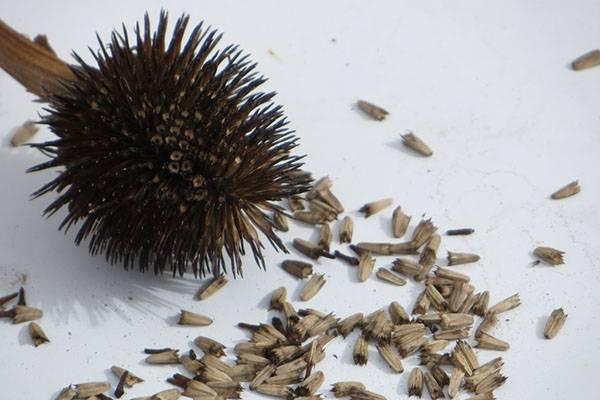
Transplanting seedlings into open ground
Transplanting seedlings into open ground is carried out in May-June. In the chosen place, holes are dug according to the number of shoots at a distance of 25-30 centimeters.Before planting, fertilize the soil by placing a mixture of garden soil and compost on the bottom of the hole, and after planting, water the seedlings thoroughly.
In the future, you will need to maintain moderate humidity, constantly weed and loosen the ground.
How to take care of your favorite garden plant
Caring for the plant is simple, but the preservation of the valuable qualities of echinacea depends on the correct actions. It is important that the flower has enough sunshine, and the ground is well loosened, cleared of weeds and watered. If the plant is to be used for the preparation of herbal medicines, then the use of chemicals for fertilization or treatment should be avoided. In this case, only organic compounds are suitable.

Watering frequency
Echinacea is a moisture-loving plant. The soil around it must be constantly moistened. Watering is recommended to be done often, but not too abundant. In hot summer they water it daily, but only in the evening. When the coolness sets in, they monitor the condition of the soil and water it as needed. Root watering is useful for plants.
What and how to feed a flower
It is necessary to feed the plant only if the land is not fertile enough. Better to use organic fertilizer by mixing compost and wood ash. You can also use a complex fertilizer containing nitrogen or potassium phosphate. Springtime should be used for fertilization.
Top dressing is carried out in order to achieve a bright and lush flowering. If you plan to use echinacea as a medicinal plant, then it is better not to feed it.
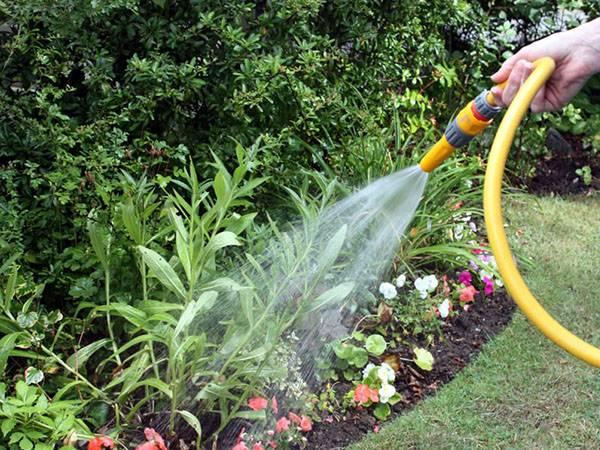
Echinacea bloom
Echinacea blooms only in the second year after planting. The young plant has dense foliage, and the peduncles are still poorly developed. You can admire the abundant flowering from mid-July to early October.
How to collect echinacea seeds
Seeds for future plantings are harvested at the very end of the season - these are the last days of October. Seed capsules at this time look like blackened spiny balls. They are cut with short stems and stored in a dark, dry place to dry out over the winter. You can wrap the boxes with a plastic bag and hang them by the stem. Then, as it dries, the seeds will fall onto the polyethylene. They are collected, dried for some time and placed in a refrigerator. This storage method is reliable, it provides seeds with high germination.
Echinacea pruning
In order to preserve the beauty of plants longer, it is necessary to cut off dried inflorescences. New buds will appear in their place. Pre-winter pruning is also done. The foliage and all stems are cut off at a distance of 5 centimeters from the ground. Roots covered for the winter will survive the winter cold more easily.
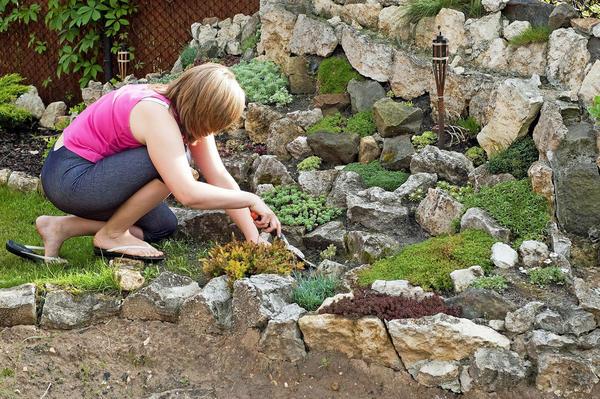
Transfer
It is recommended to replant the plant in late spring or early autumn. This should be done with a lump of earth. After transplanting, it is important that the soil is constantly moistened - this way the plant will more easily accept in a new place. It is also important to trim the inflorescences before transplanting.
Preparing the plant for the winter period
Echinacea is a winter-hardy plant. But in the climatic conditions of the northern regions and Siberia, it is necessary to properly prepare the plants for winter. Left in severe frosts without shelter, they can freeze out. After pre-winter pruning and composting, cover the remaining root necks with fallen leaves. The fallen snow will reliably protect them from severe frosts. This is especially necessary for young one-year-old plants.
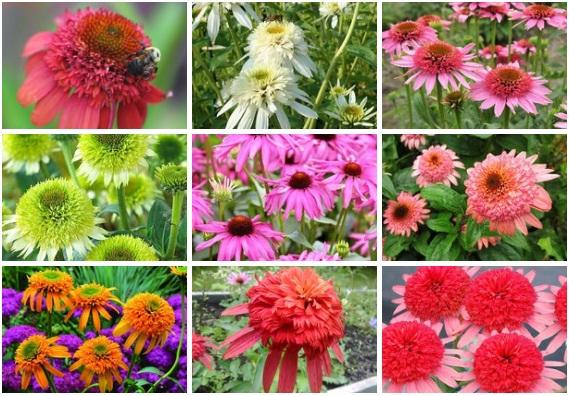
Echinacea diseases and pests: prevention and control
The plant has a high disease resistance. But there are a number of infectious pathologies and parasites that are dangerous to the flower. Control methods - removal of diseased plants and treatment with modern preparations - insecticides.
The following diseases are common:
- Fusarium is a fungal disease that leads to root rot.For the fight, the drug Fundazol is used.
- Powdery mildew is a white coating caused by a fungus that lives in moist soil. The method of treatment is treatment with Bordeaux liquid.
- Cercosporosis is a fungal pathology manifested by white spots on the leaves. In the initial stages, it is enough to break off diseased leaves. In case of severe infection, insecticides are indispensable.
The following parasites are dangerous for echinacea:
- Whitefly is a pest butterfly that eats plant leaves. To combat, insecticides Aktara, Confidor are used.
- Slugs - also destroy leaves, live in waterlogged soil. It is recommended to reduce watering, sprinkle the ground with superphosphates.
- Drooling penny - damages leaves and stems of plants. To fight, they are sprayed with infusions of tobacco dust, garlic, and laundry soap.
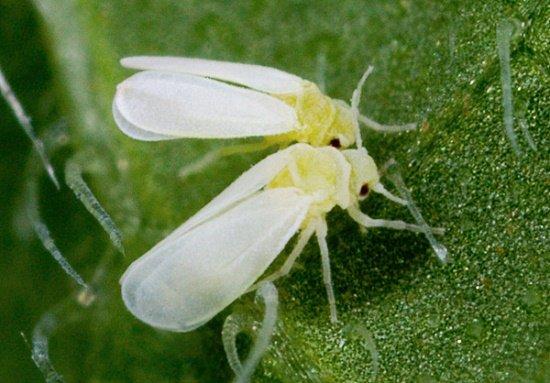
Reproduction of culture
Echinacea is propagated in three ways:
- Seeds. They are used in two cases - getting seedlings at home and sowing directly into the ground. This method is not convenient. Some seeds do not germinate because they are not viable.
- By dividing the bush. A common method, but only applicable to adult plants (4-5 years old). Used in springtime.
- By cuttings. The method is complicated, so sometimes it ends in failure.
Seeds
The decision to propagate echinacea with seeds is taken if they want to grow new varieties of plants that are not yet on the site. It is advisable to germinate seeds in greenhouses for subsequent planting, but you can sow directly into open ground. The plantings are regularly watered, loosened the ground, maintain a comfortable temperature - about +15 degrees Celsius. Seedlings will appear in about a month.
Sow in open ground in October-November, leaving for the winter. In spring, seedlings will produce viable seeds.

By dividing the bush
The procedure is carried out in April-May. Carefully dig out a bush with strong roots and make a division. The best option is 2-3 fragments with good roots with renewal points.
Propagated by cuttings
This method is applied at the end of May-June. Cuttings with two leaves are cut from healthy stems. The sections are treated with a growth stimulant and planted in fertilized soil at a temperature of 20-25 degrees Celsius.
The appearance of new leaves means that the cuttings have taken root. After two months, they are planted in open ground in a permanent place.
There are three known conditions for good growth of echinacea: plenty of sunlight, soil with a pH of more than 6 but less than 8, well-drained soil. If they are completed, then you can safely start breeding the plant. The care of its cultivation will be generously paid off by the joy of communicating with bright, positive flowers during the entire warm period.
